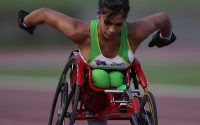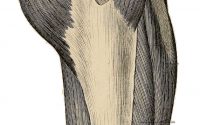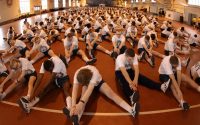Foam Rolling: Enhancing Flexibility and Range of Motion in Athletes
Maintaining and improving flexibility is essential for preventing injuries and enhancing athletic performance. The ankle’s range of motion (ROM) is especially critical for basic movements like walking, running, and jumping. Restricted dorsiflexion, for instance, can alter landing mechanics and increase the risk of lower-extremity injuries. Additionally, reduced ankle ROM adversely affects balance and posture, influencing parameters like the center of pressure.
Foam rolling, a self-massage technique involving a foam roller, has been shown to acutely improve ankle ROM. Studies suggest its effects are comparable to stretching, though the underlying mechanisms differ. Foam rolling combines pressure stimulation and voluntary movement, potentially altering tissue mechanical properties (e.g., stiffness, viscoelasticity) and inducing systemic neural adaptations.
A study from Japan explored the effects of foam rolling on range of motion (ROM), tissue properties, and neural adaptation, comparing three conditions: active foam rolling (A-FR, combining pressure stimulation and voluntary movement), passive foam rolling (P-FR, with only pressure stimulation), and sham rolling (SHAM, mimicking foam rolling without pressure).
Key Findings on Foam Rolling Techniques
- Active Foam Rolling (A-FR): Combines pressure stimulation and voluntary movement.
- Effectiveness: Significantly improves active and passive ROM, reduces pain perception (pressure pain threshold, PPT), and alleviates negative mood states (e.g., tension-anxiety).
- Mechanism: Likely enhances systemic neural adaptations and stretch tolerance.
- Passive Foam Rolling (P-FR): Involves pressure stimulation only.
- Effectiveness: Improves passive ROM and enhances parasympathetic nervous activity. Also reduces negative mood states like anger-hostility.
- Mechanism: Primarily linked to pressure receptor stimulation (e.g., Golgi receptors, Pacini and Ruffini receptors).
- Sham Rolling (SHAM): Mimics foam rolling with voluntary movement alone.
- Effectiveness: Limited to slight mood improvements, with no significant effects on ROM or tissue mechanical properties.
Neural and Tissue Adaptations
Foam rolling’s benefits extend beyond local effects:
- Systemic Neural Adaptation: Enhances parasympathetic activity, promoting relaxation, reduced pain perception, and improved mood.
- Tissue Properties: While changes in stiffness and viscoelasticity were minimal, morphological changes, such as reduced deep aponeurosis thickness, were observed after A-FR.
Practical Recommendations for Therapists
- Incorporate Foam Rolling in Warm-Ups: A-FR is highly effective for preparing athletes by improving ROM and reducing muscle stiffness.
- Address Passive ROM Limitations: Use P-FR for clients with passive ROM deficits or those who require relaxation-focused interventions.
- Standardize Techniques: Ensure consistent pressure intensity, rolling duration (e.g., 3 minutes), and speed for optimal outcomes.
- Monitor Mood States: Foam rolling also benefits mental well-being, making it a valuable tool for holistic athletic care.
Conclusion
Foam rolling, particularly active techniques, enhances flexibility, ROM, and mental state in athletes. While its effects on tissue stiffness are limited, its systemic neural adaptations offer significant therapeutic value. Therapists should integrate foam rolling strategically into training and rehabilitation programs to maximize its benefits for clients.


